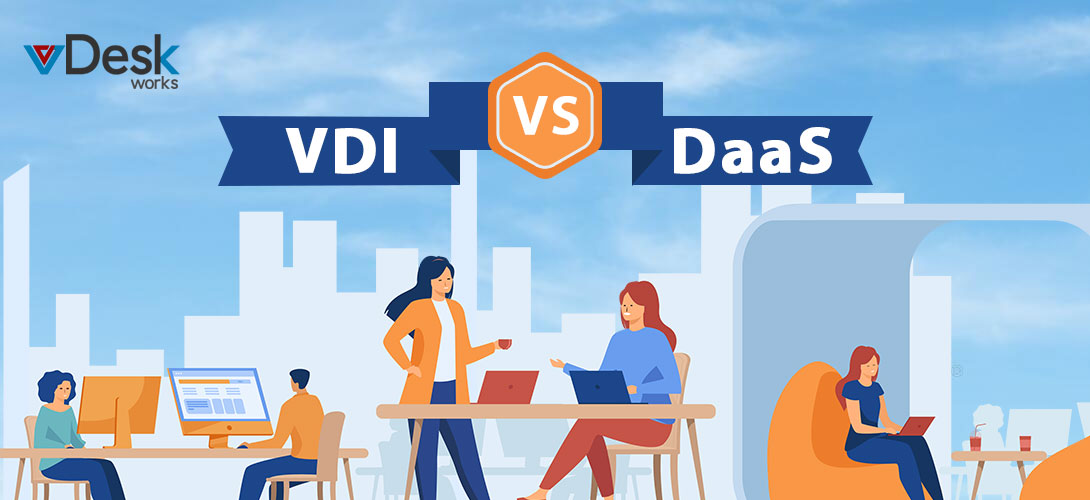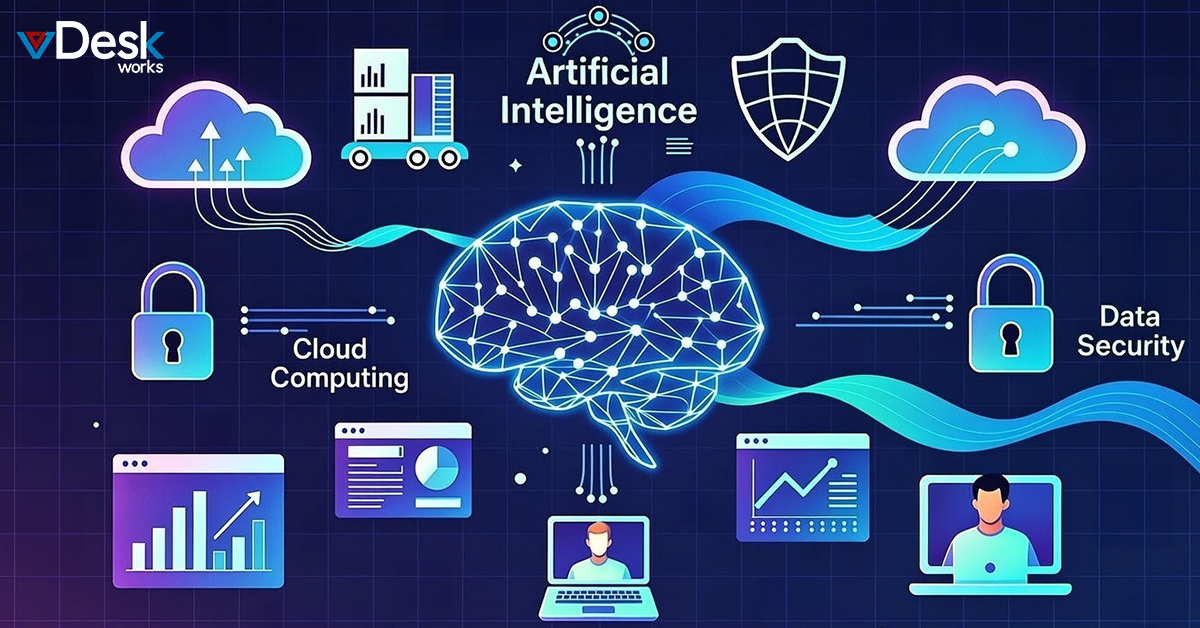One of the most popular IT conversations happening right now is around virtual desktops. Businesses want to know if they should invest in Virtual Desktop Infrastructure (VDI) or a desktop as a service (DaaS).
To help businesses better understand the difference between VDI and DaaS, we've put together this post that outlines five major points of differentiation between the two.
If you are considering VDI or DaaS, give this post a read to help decide which option is best for your business. If you have any questions about either solution, don't hesitate to reach out!
What is VDI?
Virtual desktop infrastructure (VDI) is a Remote Desktop technology that pools desktop resources and delivers them as a service. VDI solutions offer users the ability to access their desktops from anywhere, at any time, on nearly any device. VDI allows IT to centrally manage security while improving data protection. Virtual desktops make it easy for users to work from anywhere, improving productivity and providing a better employee experience.
What is DaaS?
Desktop-as-a-service (DaaS) refers to a desktop delivered as an on demand service. Rather than buying, deploying and managing applications/desktops in your own datacenter or hosting facility, you can rent desktops via the cloud.
VDI vs DaaS: 3 Major Differences
Here are the top three things you need to know about the differences between VDI and DaaS.
#1 DaaS is Multi-Tenant vs VDI is Single-Tenet
One of the major differences between VDI and DaaS is that VDI is single-tenant while DaaS offers multi-tenancy.
Multi-Tenant: Multi tenancy occurs when a single instance or copy of an application serves multiple customers (customer data does not overlap). This means that one physical server can host several hundred virtual machines, each one serving a single customer.
Single-Tenant: This means that every Virtual desktop on the physical server is dedicated to just one client or organization - no sharing of resources between customers. Multi-tenancy offers several advantages including less hardware costs and easier management.
What does this mean for me?
If you are considering a virtual desktop as a service (VDAS) solution, or a Remote Desktop for Work from home, be sure to consider the benefits of multi tenancy such as lower costs, greater efficiency, and more. With VDI, you will pay for the entire virtual desktop even if you are only using part of it; however with DaaS, every user is assigned their own dedicated VM (space permitting).
#2 Management and Maintenance
Another major difference between VDI and DaaS is the management & maintenance of each solution. When you choose a virtual desktop infrastructure (VDI) solution, you are responsible for managing all aspects of your desktops including patching, updates, security features, hardware/software failures etc. With DaaS however this responsibility shifts to the provider.
What does this mean for me?
If you are looking for the most efficient and cost effective solution, DaaS is definitely worth considering since it shifts responsibility of maintenance to your cloud service provider (CSP). VDI requires businesses to hire in-house staff or contractors with specific expertise; meanwhile, you can simply call on the provider's support team to handle all maintenance needs.
#3 Overall Cost
Another important distinction between VDI and DaaS is the overall cost of each solution.
VDI: In a virtual desktop infrastructure (VDI) scenario, your company will be responsible for purchasing servers to host desktops/laptops as well as managing software licenses, hardware costs etc. These items can quickly add up to thousands or even millions in expenses.
DaaS: In a desktop-as-a-service (DaaS) scenario, your company will pay for hardware and software on an as needed basis. Hardware costs are typically lower when compared to VDI since providers allow you to "rent" desktops rather than purchase them. You can add or remove desktops at any time.
What does this mean for me?
This means that your business will incur less upfront costs with DaaS since you are only responsible for licensing, hardware and software when needed. With VDI however, businesses must purchase servers to host desktops/laptops which in turn requires additional maintenance expenses on top of the initial hardware costs. Although some providers like vDeskworks offer hosted VDI, where support, set-up and maintenance is taken care of by vDeskworks team.
If you are looking for the most cost effective solution, DaaS is definitely worth considering since it shifts responsibility of maintenance to your cloud service provider (CSP).
VDI and DaaS both offer Remote Desktop benefits to businesses; however, there are some key differences that you should consider before committing to one or the other. VDI is single-tenant and offers complete desktop autonomy while DaaS supports multi-tenancy and allows your company to share resources with others. DaaS is more cost effective than VDI since it shifts responsibility of maintenance and hardware costs to the cloud service provider (CSP). VDI requires businesses to purchase servers to host desktops/laptops while DaaS only charges for the services you actually use. Still not sure about which solution is right for you? Get in touch with us today and Chat with a Consultant to find out!


 Noah Thompson
Noah Thompson
















